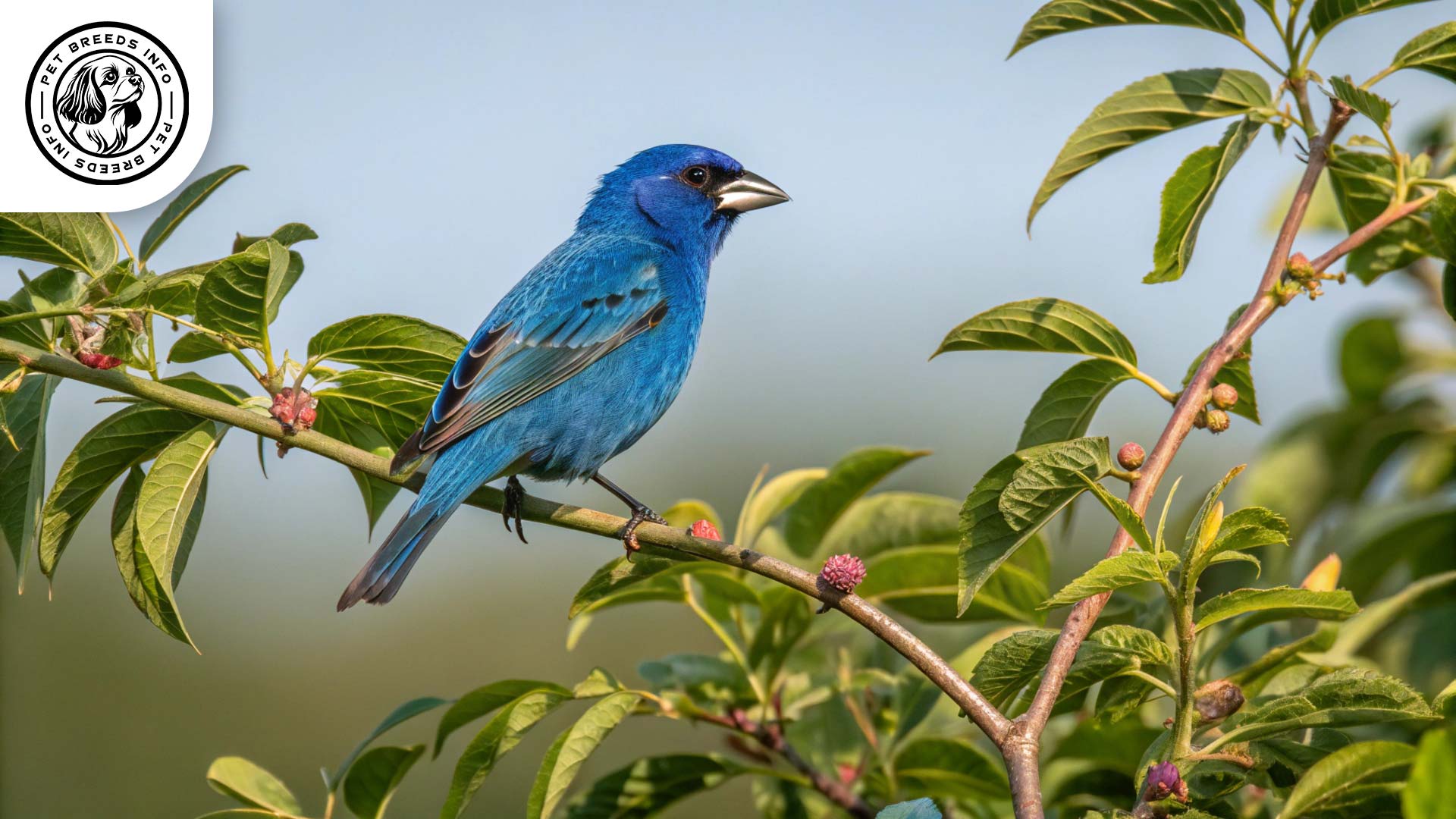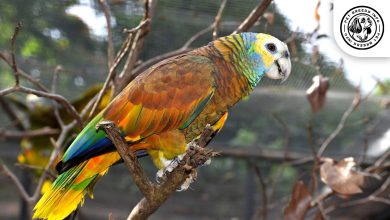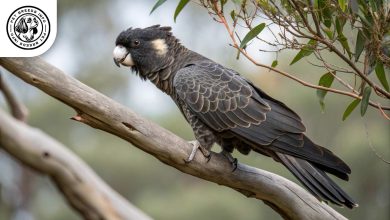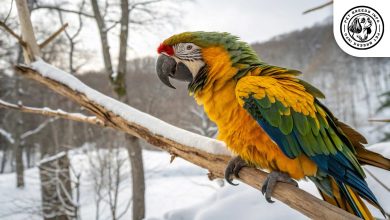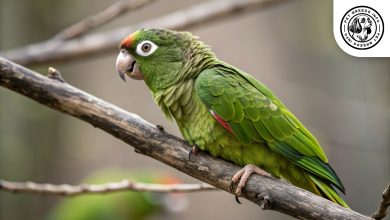Indigo Finch Bird: Personality, Lifespan, Food & Care
General Introduction of the Breed
The Indigo Finch, also known as the Indigo Bunting (Passerina cyanea), is a small, brightly colored songbird native to North America. This breed is particularly well known for its striking blue plumage, which appears more vibrant in males due to the way their feathers reflect light. The species is most commonly found in the eastern and central United States, particularly in woodland edges, fields, and meadows.
The Indigo Finch has been admired for centuries, primarily for its beautiful plumage and melodious song. It migrates seasonally, spending winters in Central and South America before returning north for breeding.
Table of Contents
| Common Name | Indigo Finch, Indigo Bunting |
| Scientific Name | Passerina cyanea |
| Origin | North America (eastern and central United States) |
| Size | 4.5 to 5 inches (11 to 13 cm) in length |
| Lifespan | Approximately 7 to 10 years in captivity |
| Talking Ability | Not easily trainable to talk |
| Colors | Males: Vibrant iridescent blue (breeding season); Females/Juveniles: Muted brownish with hints of blue |
| Noise Level | Melodious song, generally not excessively loud |
| Social Behavior | Generally social, prefers company of own or similar species |
Physical Characteristics
The Indigo Finch is a small bird with a compact body. Males typically measure around 4.5 to 5 inches (11 to 13 cm) in length, with a wingspan of approximately 7 to 9 inches (18 to 23 cm). They usually weigh between 12 to 18 grams.
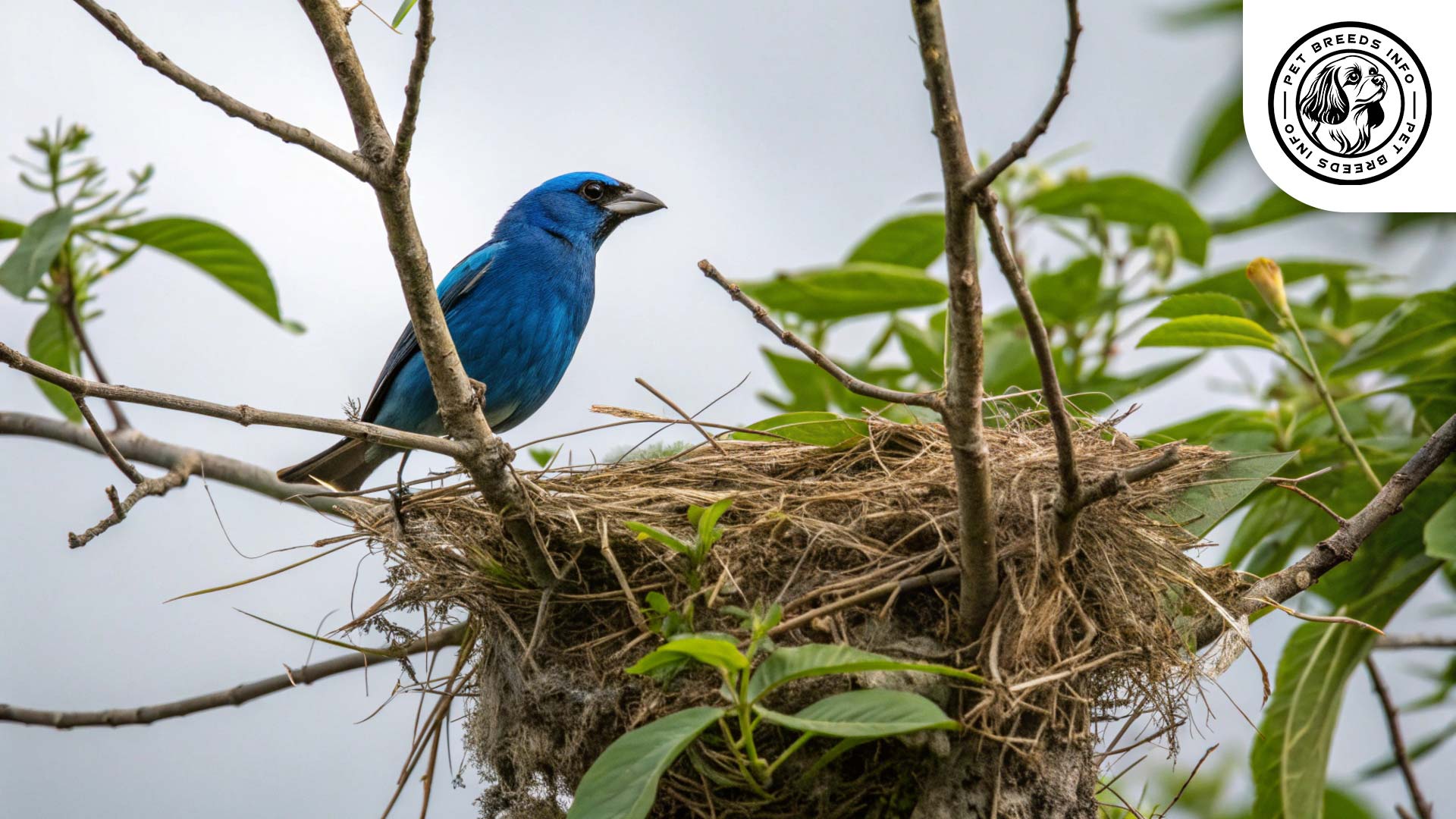
The male displays a vibrant, iridescent blue color during the breeding season, while females and juveniles have a more muted brownish hue with subtle hints of blue on their wings and tail. Their eyes are small, round, and dark, complementing their pointed beak, which is a pale ivory or greyish color.
The Indigo Finch has a small, conical bill perfectly adapted for seed consumption. Their tail is short and slightly forked, while their wings are rounded, making them agile fliers.
Read More: Java Sparrow
Personality and Temperament
The Indigo Finch is an intelligent bird with a strong instinct for survival. While timid in the wild, captive-bred individuals can become accustomed to human presence.
They are very active birds that require plenty of space to fly and explore. During their breeding season, males become territorial and sing frequently to establish dominance and attract mates.
These birds are generally social, preferring the company of their species or similar finches in aviaries. However, they can be sensitive to environmental changes and loud noises, making a calm and stable home environment ideal.

Care and Maintenance Requirements
The Indigo Finch requires regular exercise, preferably in a spacious aviary or flight cage that allows them to move freely.
They are best suited for enclosures with ample space, natural perches, and a variety of greenery to mimic their natural habitat. While some finches can adapt to apartment living, it is essential to provide them with a stress-free and well-ventilated environment.
Grooming needs are minimal, as Indigo Finches groom themselves. However, access to a shallow birdbath is necessary to allow them to maintain their feather condition. Nail trimming may be required occasionally if they do not naturally wear them down.
Indigo Finches are sensitive to extreme cold and excessive heat. Their enclosure should be kept at a stable, mild temperature to prevent stress and illness.
Diet and Nutrition
The best diet for an Indigo Finch consists of high-quality finch seed mixes, supplemented with fresh fruits and vegetables such as apples, carrots, and leafy greens.
They require occasional protein sources, such as mealworms or egg food, particularly during breeding periods. It is important to avoid giving them avocado, chocolate, caffeine, and processed human foods, as these can be toxic to birds.
Finches should be provided with fresh water daily, along with cuttlebone or mineral blocks to support beak and bone health.

Health and Common Medical Issues
Common health issues in Indigo Finches include respiratory infections, mite infestations, and digestive problems due to improper diet.
They are generally hardy birds if provided with a clean and stable environment. However, stress and sudden changes in temperature can make them vulnerable to illness.
Regular veterinary checkups and vaccinations, if applicable in their region, help ensure a long lifespan of approximately 7 to 10 years in captivity.
Read More: Green-winged Macaw
Training and Behavior Management
While Indigo Finches are not easily trainable like parrots, they can learn to associate their owners with feeding times and may become less skittish over time.
Positive reinforcement and minimal handling are key to earning their trust. They respond best to a peaceful setting with consistent routines.
Unlike some bird species, Indigo Finches do not require behavioral modification, as they exhibit natural instincts when housed correctly.
Interaction with Other Animals and Humans
Indigo Finches are social birds that thrive in flocks. They interact well with other finches and similar small bird species.
They are not well suited for handling or direct interaction with humans like parrots but can coexist comfortably with gentle observation.
These birds are best suited for bird enthusiasts, breeders, or those who prefer low-maintenance yet visually appealing pets. Due to their small size, they are better suited for families without young children who may accidentally mishandle them.

Price and Availability
The cost of an Indigo Finch varies based on region and breeding quality. On average, they range between $50 to $150 per bird.
Prospective buyers should ensure they purchase from reputable breeders or avian specialty stores. Adopting from bird sanctuaries is also an excellent ethical option.
Since Indigo Finches are migratory wild birds, check local regulations before purchasing, as some areas may have laws protecting them from captivity.
Conclusion and Final Thoughts
The Indigo Finch is a stunning and melodious bird ideal for bird enthusiasts who appreciate their beauty without requiring hands-on interaction.
These birds thrive in aviary settings or large flight cages with other finches. They require a proper diet, environmental stability, and minimal but essential maintenance.
Before acquiring an Indigo Finch, ensure you have the space, resources, and understanding of their social needs to provide a happy and healthy life.
Read More: Blue-throated Macaw Bird
FAQ
What do Indigo Finches eat?
They primarily eat high-quality finch seed mixes, supplemented with fresh fruits, vegetables, and occasional protein sources.
Do Indigo Finches need a lot of space?
Yes, they are active birds and require a spacious aviary or flight cage to fly and explore.
Are Indigo Finches good pets for children?
Due to their small size and sensitivity to handling, they are better suited for families without young children.
What is the typical lifespan of an Indigo Finch in captivity?
With proper care, they can live for approximately 7 to 10 years.
Do Indigo Finches talk?
They are not easily trainable to mimic human speech.
